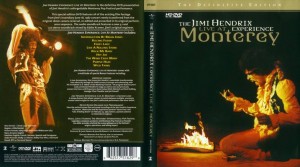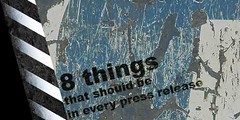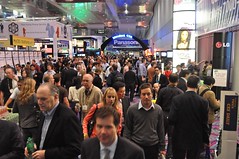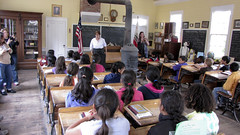The Big Problem With Tradeshow Lead Collecting

Companies spend boats full of dollar bills on tradeshow marketing. They’ll spend to train their staff, spend to put up a great booth, spend to spiff it up with cool graphics and maybe contrive an outstanding demo of their products.
They may do it so well, in fact, that they’ve got hundreds of folks clamoring for their product. These hot prospects leave contact information and details on their wants and needs in regard to the product or service.
Then they go back to their office, expecting a follow-up call or email. Or brochure, or postcard. Something. Anything!
But they get nothing. Nada. Zip. Zero. Squat.
Why? Because the company with the booth dropped the ball. They didn’t follow up consistently. The sales staff didn’t see the value in the leads. Or they made a couple of calls, ran into a few dead ends and assumed that all the leads were equal. And stopped calling.
Or the leads were delivered to the sales staff, but someone there didn’t do much with them. Because it was, after all, a pretty big job. With hundreds of leads, the idea of calling or writing all of those folks was intimidating to say the least! So the follow up was far short of what was necessary to drum up more business. Which was, in fact, the whole point of going to the tradeshow.
So often the long chain of events that starts with the decision to exhibit at a tradeshow falls apart with a single weak link.
In this case the tradeshow leads were collected – a lot of them! – but there was minimal follow up, mainly because the system broke down. Or expectations were unrealistic. Or the manpower to follow through wasn’t available. Or the will was weak. Or something.
Before heading off to the tradeshow, make sure the ‘back end’ is set up. Put your system into place which takes into account the following:
- How will the leads be distributed?
- Who will follow up?
- What is the nature of the follow up?
- How many leads are expected?
- Is the manpower sufficient to handle the new show leads?
- Is the budget in place to make sure the follow up happens?
- Is someone actually in charge?
Tradeshow leads – by themselves – are worthless. Like a great idea that sounds cool over a can of beer, nothing happens until the action takes place.
If your tradeshow leads remain in stasis, you won’t write any business. Without action, you’re like the wallflower at the dance thinking about asking the pretty girl to dance. You’re just standing there. In the shadows. Against the wall.
If on the other hand you have a plan – and a system – for tracking the leads, the follow up (phone, email, direct mail, in-person visits), and the inevitable customer wants and desires, you can actually make hay with tradeshow leads.
In a recent chat with Fred Trembley with Tradeshowfollow-up.com, he confirmed what most people in the tradeshow consulting business say: that almost 80% of all tradeshow leads go a-wasting. He says that a system is definitely needed to prevent that from happening.
And I say that if you are able to follow up on most of your tradeshow leads, you’re at least one important step ahead of 80% of your competitors!
Are your leads wasted?

photo credit: aikijuanma










